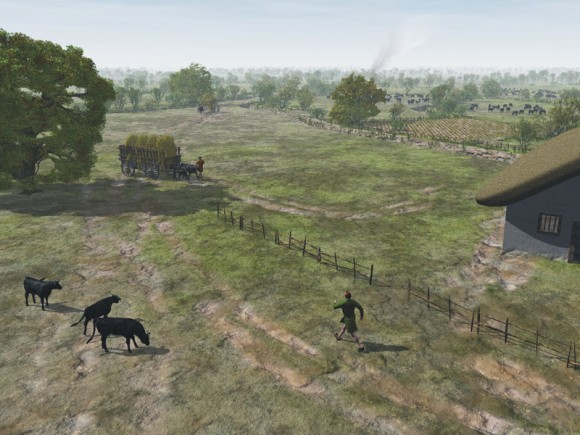- This website reflects our views on the Terminal 5 site based on many years of post-excavation analysis, which culminated in the publication of the final volume of the T5 report in 2010.
The Heathrow Landscape
How do we know this?
Find out more details in our archaeological evidence sectionHeathrow Airport
The Archaeologists
Framework Archaeology
Tag Archives: barn
100 BC-400 AD A New Direction

Roman settlement and landscape.
From 100 BC (Late Iron Age) the people of southern Britain came into increasing contact with the Roman Empire, culminating in AD 43 with the Roman invasion of Britain. For the next 370 years Britain became tied into the political and economic structure of the Roman Empire. At Heathrow, the old Middle Iron Age settlement became a focal point for continuing occupation through into the later Iron Age and early Roman period, although parts of the landscape were radically altered at this time, with new alignments of field systems largely overwriting the previous land divisions. While animal husbandry remained a fundamental part of the agricultural economy, the evidence suggests an increasing emphasis on cereal crops from the Late Iron Age onwards. The settlement complex appears to have been continually modified on a somewhat ad hoc basis throughout the Roman period, and would have undoubtedly become an integral part of the emerging Roman economy, with trackways being cut across the ancient landscape to serve the new markets at nearby Staines and the growing city of Londinium.
During the later Roman period (from the 3rd century AD) radically new styles of structure and wholesale changes to the eastern field systems were introduced, resulting in a substantial ‘ladder’ enclosure system, surrounding a major central droveway, designed to accommodate high levels of livestock traffic. The impetus for such development was probably commercial, perhaps driven by wealthy estate owners to maximise profits in a steadily changing economic environment. Farms like the one at Terminal 5 may have been incorporated into large managed agricultural estates (latifundia), perhaps belonging to the owners of more remote villas and/or wealthy townhouses in London. Rural farmers on these estates may have become coloni, essentially subsistence workers who were tied to the land in service of the estate, though also able to produce a meagre surplus for themselves.
